- Home
- Edward Lee
Buttermilk Graffiti Page 10
Buttermilk Graffiti Read online
Page 10
What about the person who makes these cigars?
You mean Mel? Yeah, he lives not too far away.
A young Cuban woman stops in, dragging a cooler full of desserts. Her name is Ody, and she sells pastries: two kinds of tarts, guava and coconut, and something she calls semovita, a kind of puff pastry square dusted with powdered sugar. The pastry is light, delicate, and crispy in a way that tells me it is made with lard. They are a dollar each. I buy pastellas for everyone, and we continue to drink and talk. Four cops come in dressed in full gear, and I tense up. They sit down at a long banquette to smoke cigars. They take exactly twenty minutes to smoke and then politely leave.
They are regulars, the manager says.
I explain that I have to leave, that I don’t want to let Norman down when he asks me how I liked his recommendations.
But Mel is on his way, the manager tells me. I gave him a call.
My head is spinning for an excuse to leave, but the cigar smoke has gotten me light-headed. Something tells me I should wait.
I’ll finish my drink, but then I’ll have to leave, I say.
Mel Gonzalez is tall, fit, bald, and slightly bent over. It is the posture of a man who has spent years working in a hunched position—not unlike the posture of an aging cook. He is in his sixties but looks much younger. He asks me how I liked his cigar. I confess that I don’t know very much about them. Aside from the occasional late-evening indulgence, I have never made it a conviction to learn.
You are smoking a Flor de Caño, he tells me, made from Vuelta Abajo.
I nod as if to say, Well, of course I am.
He takes me into the humidor and tells me about cigar making. He is a confident man, eager to explain his craft. He picks up one of his boxes, inhales deeply, and gives it a light tap with his finger.
“It starts with the box,” he says. Cedar to age the cigars. He shows me the box. It took him a year to come up with the design. It bears an illustration of Matanzas Bay, surrounded by sandy beaches and palm trees. A sun is setting beyond the horizon. Everything about the illustration could easily be a cliché, until you listen to Mel explain it. Matanzas means “massacre,” as this land was built on bloodshed.
“It is on these lands that the Vegas of Canimao started a culture that would make the best cigars in the world.”
Mel comes from a family of cigar rollers. He is third generation.
“Just beyond the hills here, there is a ridge.” He points to a place on the cigar box outside the frame. “From there, you can see the entire bay. My dream is to build a house there and retire.”
Mel arrived in Miami on September 23, 1992. He remembers the date because it is etched into his identity. He went to school; he did sales for Electrolux and made a good living. In 2006, he started his own cigar company and called it Canimao. Last year, he sold 150,000 cigars.
“So, what makes a good cigar?” I ask him.
He raises an eyebrow as if to say, That’s a dumb question, but I’ll tell you anyway. “A cigar is made from one thing and one thing only: tobacco leaves. It is how you blend them, how you roll them, that creates flavors. A good cigar, you can feel aromas in your mouth, you can taste nuances: matices. First thing you must do is smell.” He handles the cigar as a chef might a piece of fruit. Eyes closed, he takes deep but controlled breaths to show that something is being communicated between the cigar and his olfactory senses. Then he touches it. He taps the cigar, rolls it between his deft fingers. “It should be dense and tight but not too much, or you won’t get a good pull.” He lights it. “You light it first and then pull. Good materials mean you will have a good strong ash. This is a Connecticut wrapper, sweet and delicious. There is a sweet spot to every cigar. And that is what you are searching for. The first few puffs will tell you nothing. Wait until you get a good glowing ember. Then pull. Roll the smoke through your mouth, under your tongue. Is it woody? Is it creamy? Taste your lips. Look at the smoke. It is seductive. Look at your ash; it should be sturdy.”
I am mimicking his every move.
“Don’t ever tap the ash off the end of your cigar. Let it fall away. Take a rest, drink rum or coffee or wine. Don’t smoke too fast. Pause. Enjoy.” He takes a long pull from his cigar and lets the smoke roll off his puckered lips.
I want to have lips like his.
He is silent for a while, then jumps back into the conversation. “Talk to someone, make a conversation, make the day last longer. Only then do you go back to the cigar.”
Suddenly, I am a student fishing for the words to describe my sensations. The first time I tasted food, gourmet food (a bordelaise sauce, a rémoulade, a dacquoise), I remember liking it but not knowing how to describe it. It was only after I learned the words that were established long before I was born that I was able to articulate my emotions. That was so long ago that I have forgotten what it feels like to be at a loss for words, to be literally choked up and speechless by a sensation happening in my mouth. What do words such as silky or pungent or savory really mean? They fall so short of the actual thing that is happening. Words fail to describe it because we are trying to convey not merely flavor but emotion.
I don’t have the words right now to tell Mel what I’m feeling. My eyes are watering from all the smoke in the room, but I feel a fullness in my heart. My senses are tingling with something. My tongue is sandy and bitter; the taste is of the earth and sunlight and heat and age and sweat. I can’t say for sure that it is cherry or burnt walnut or licorice. Descriptors like these are imaginative but misleading. What I’m tasting is an aroma so deep that my nostrils burn. The idea of tasting smoke is so savage and yet so damn sexy at the same time that I can’t peel my mind away from the primal nature of it. I have a sudden urge to take my shirt off.
We get to the end of the cigar, and my mind is exhausted. Mel is not unlike a winemaker trying to create and layer flavors using only one ingredient. His ingredient just happens to be tobacco leaves. His sensitivity to smoke is so measured—the tightness of the roll, the density of the smoke. I try to imagine, if I could focus that intensity on just one ingredient, the depths of flavors I could reach. I’m beginning to understand how immensely difficult his craft is.
We try another cigar, a Kentucky Fire Cured, to taste the difference. This one is harsh, hickory flavored, chocolaty. And then it hits me: I can define one thing only after I have tasted its opposite. That is how we learn. We experience one thing, and then we do its opposite, and that gives us a spectrum. How do I know if a banana is ripe? Because I have tasted the cruelty of an unripe one. I am getting a lesson in how to taste. It is a lesson I know intuitively, but it has been so long that I’ve forgotten the rudimentary laws of tasting. I’m starting again from the beginning.
If we were in Cuba right now, Mel says, this is what we would be doing: sitting in a café smoking; talking about music, philosophy, love, drinks; passing the day. What else is there to do?
He talks about the Cuban cigar, that mythical unicorn of perfection. He says he prefers filler from Nicaragua, wrappers from Ecuador. “In Cuba right now, it is hard to get the right ingredients; they have to make do with very little. They have the knowledge but not the right materials. How can you be proud of your craft in that kind of world? Cuba does not allow you to pursue your dreams. You live day by day with patience, nothing else. Because of communism, we had to mix our coffee beans with piss,” he says angrily. I’m unsure if this is a euphemism or if he means this literally. He is disturbed by it, so I don’t ask him to clarify. “My father is still alive,” he says. “He is ninety-nine. I probably will not see him again before he dies.”
I feel terrible. I have brought on unpleasant memories. Mel is visibly shaken. I figure this is when we say good-bye. Instead, he asks if I’m hungry. Yes, I am. It is almost dusk. I have more smoke in my belly than calories. “I’ll take you to La Fragua,” he says. “They make the best chicken.”
We get in his car and drive through traffic. The sky is overcast, and the wind gusts are swirling stray newspaper pages across the streets. I have yet to see a drop of rain.
“It will come soon,” he says. “We always get a big storm this time of year.”
His wife calls. He was supposed to be home hours ago, he says. I hear him talking about me in Spanish, clearly blaming me for his delay. He puts her on speakerphone, and I ready myself to get yelled at by someone I’ve never met. Instead, a lovely voice comes from the speaker asking me if her husband has been nice to me. The best, I say. She says that next time she will invite me to her home, but right now it’s not a good time. I thank her.
Mel drops me off at the restaurant and tells me he can’t stay. He orders dinner for me: Pollo Frito Asado con Mojo with a side of yucca and maduros (fried plantains). We embrace as though we’ve been friends for ages. I sit down and devour this salted roasted chicken, which may seem ordinary but for the mojo sauce. Simple in its composition—a concoction of orange, lime, oil, garlic, salt, and pepper—it elevates the chicken, gives it a softness you might not otherwise notice.
I devour my dinner and get up to pay. “No worry,” the waiter says. “Mr. Mel has taken care of your dinner.” It is at this moment that I understand the depth of Mel’s quiet kindness.
The next morning, I get a call from Norman. He asks me to meet him at Enriqueta’s. It is a small restaurant that is always busy. I get there just before noon, and it is already packed. Norman and his wife, Janet, are sitting patiently at a small table. We all order the special of the day, Vaca Frita, which is fried and shredded flank steak that is minimally seasoned. It is so emblematic of the Cuban food I love: simple and resourceful, just a few ingredients but made with techniques that most chefs today would not have the patience for, not every day at least. The meat is chewy and tender at the same time, dutifully seasoned and yet bland, as if the cooks do not want the younger generation to forget how simple the food of their elders was. If the meat is a dissertation on simplicity, the black beans and rice are a lesson in how to extract flavor from humble ingredients. It is astounding how much moisture and richness can come from a plate of beans. Mix them together with the beef, and you can feel the harmony in the meal. A few fried plantains round out the dish.
I ask Norman about his favorite haunts in Miami. He rattles off the names of a number of places and then looks to Janet for reassurance. She is a quiet woman, thoughtful and kind. They have been a team for so long that they finish each other’s sentences. Norman is excited about his new projects, which include a cooking school in Miami. Janet smiles but seems weary of a life in the kitchen, a life that is relentless and unforgiving.
I admire Norman for so many reasons but mostly for his composure. I have worked for chefs half his age and twice as bitter. There is a serenity to him that puts me at ease. I know how nervous he must be days away from opening a new restaurant, but he took the time to buy me lunch and talk to me. I know he and Janet are busy, and I’m trying to fill every moment with questions, as I don’t know when I’ll get to see them again. And I know I’ll miss them the minute we part ways.
What do we lose when we become Americans? I ask Norman. Do we abandon our forefathers’ cultures in favor of an American identity?
“We do,” he says, “and then, at some point in our lives, we feel an undercurrent pulling us back, and we rediscover who we are. And what is gained? The future. That is what we gain. And Miami is where the future comes to rehearse.”
I can’t remember if that was him saying it or if he was quoting someone, but that is Norman. He speaks in grandiose sentences, and then you listen to him expound on his thoughts, and time slows down. The three of us keep talking over coffee and flan.
I give both Norman and Janet a long hug, and I leave the restaurant. Sometimes you meet your heroes, and they are everything. Sometimes they disappoint. Sometimes you discover more about yourself than you do about the person you have idolized for so long. Norman is all those things to me and more. I found in him a kindred soul, and I feel a nagging sense of loneliness as I walk back to South Beach, with all its glitz and glamour. I realize that I forgot to tell Norman about the blurb I’m writing for his book. I forgot to tell him that I could not imagine life without him, that he was the one who set the world in motion for me, that even now, as I assemble the words in my head to write his blurb, I’m being swept up by the early winds of a hurricane picking up speed and hurling me toward the center of an inconsolable storm.
The week after I leave Miami, news of Fidel Castro’s death spawns celebrations all over Calle Ocho. The restaurant Versailles drapes a flag of Cuba over its awning as crowds dance, banging on pots and pans. I bought a box of Mel’s cigars, and I’m enjoying one in my office, watching the celebrations on the Internet. I go to the kitchen to make something that would go well with a robust cigar, something smoky, earthy, and balanced—a dish for Mel, for Janet, a dish to honor my friend and mentor, Norman Van Aken.
Mango Fries with Jalapeño-Mint Aioli
All over Calle Ocho, there are mangoes in varying stages of ripeness. I love the way a mango can literally change overnight as it ripens. For this recipe, use slightly underripe mangoes—they should not be green, but they should be firm. Frying mango makes it soft and buttery. The jalapeño-mint aioli brightens the dish. It’s great with fried fish, too.
Serves 2 or 3 as a snack
3 slightly unripe mangoes
About 6 cups corn oil, for deep-frying
1¼ cups all-purpose flour
2 teaspoons salt, plus more to taste
4 teaspoons freshly ground black pepper
2 teaspoons cayenne pepper
1¼ cups club soda
Sea salt
About 1 cup Jalapeño-Mint Aioli
Peel and pit the mangoes. Cut them into ⅓-inch-thick slices, then cut the slices into ⅓-inch-thick strips.
Pour about 2 inches of corn oil into a medium pot and heat to 350°F.
In a medium bowl, whisk together 1 cup of the flour, the salt, black pepper, cayenne pepper, and club soda to make a light batter.
Put the remaining ¼ cup flour in a small shallow bowl.
Working in batches, coat the mango fries lightly in the flour, then dip them in the batter, shake off the excess batter, and gently add to the hot oil. Cook, turning them once or twice, until the fries are golden brown on all sides, 1 to 2 minutes. Remove the fries using a slotted spoon and drain on paper towels. Sprinkle with salt while they are still warm.
Serve the fries hot, with the aioli on the side.
Jalapeño-Mint Aioli | Makes about 2 cups
2 cups mayonnaise, preferably Duke’s
¼ cup chopped fresh mint
2 jalapeño peppers, seeded and minced
3 garlic cloves, minced
Grated zest and juice of 1 lime
In a medium bowl, combine the mayonnaise, mint, jalapeño peppers, garlic, and lime zest and juice. Cover and refrigerate. The aioli is best when just made, but it will keep in the fridge for up to 3 days.
Chicken “Vaca Frita” with Coconut Rice and Mojo Sauce
This recipe was inspired by the vaca frita I enjoyed with Norman. The dish is traditionally made with beef, but I’ve swapped in chicken legs instead. The meat gets tender, and the lemon gives it a vibrant acidity. I serve it with a sweet coconut rice to complement the chicken. Slices of ripe mango brighten the dish.
Serves 2 as a main course
2 whole chicken legs
½ lemon
4 garlic cloves
1 teaspoon chopped fresh oregano
2 teaspoons smoked hot paprika
2 teaspoons ground cumin
1 tablespoon olive oil
¼ cup Mojo Sauce, plus more for serving
coconut rice
3 cups light chicken stock
&
nbsp; 2 cups coconut milk
1 cup Carolina Gold rice
2 teaspoons fish sauce
1 teaspoon salt
Pinch of sugar
2 tablespoons olive oil
Kosher salt and freshly ground black pepper
Mango slices, for garnish
Fresh cilantro leaves, for garnish
Preheat the oven to 350°F.
Place a large sheet of aluminum foil on your work surface. Put the chicken on the foil, then layer the lemon, garlic, oregano, paprika, and cumin over the chicken. Sprinkle the olive oil over the top. Top with another sheet of aluminum foil. Form the foil into a packet and crimp the edges tightly to seal.
Put the packet on a baking sheet and bake the chicken for 40 minutes, or until the meat is tender and falling off the bone (open the foil packet carefully, avoiding the hot steam, to check it). Open up the packet and let the chicken cool.
Transfer the chicken to a cutting board or plate; strain the liquid in the packet and reserve. Remove and discard the chicken skin. Pull the meat off the bones and put it in a bowl. Add the mojo sauce and toss to coat. Let the chicken marinate at room temperature for 20 minutes.
Meanwhile, to make the rice: In a large saucepan, combine the chicken stock, coconut milk, rice, fish sauce, salt, and sugar. Bring to a simmer, then lower the heat, cover, and cook, stirring occasionally, until the rice is tender, about 20 minutes. The rice should be creamy and loose; if necessary, add a little water to the rice and stir just before serving.
Drain the chicken and discard the marinade. Heat the olive oil in a large skillet and fry the chicken, turning occasionally, until crispy on all sides, about 4 minutes. Season with salt and black pepper.
Spoon the coconut rice onto a serving plate. Place the chicken on the rice. Garnish with mango slices and cilantro leaves. Pour the reserved chicken juices over the chicken and rice and finish the plate with a little more mojo sauce.

 In the Year of Our Lord 2202
In the Year of Our Lord 2202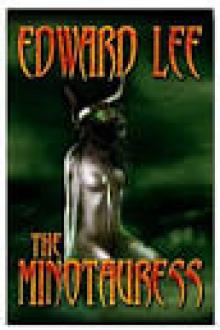 The Minotauress
The Minotauress Terra Insanus
Terra Insanus The Stickmen
The Stickmen Flesh Gothic by Edward Lee
Flesh Gothic by Edward Lee Family Tradition
Family Tradition You Are My Everything
You Are My Everything The Backwoods
The Backwoods The Teratologist
The Teratologist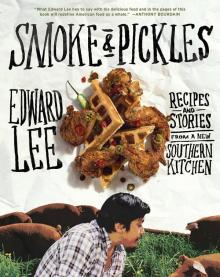 Smoke and Pickles
Smoke and Pickles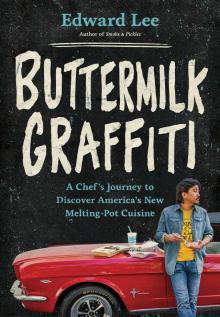 Buttermilk Graffiti
Buttermilk Graffiti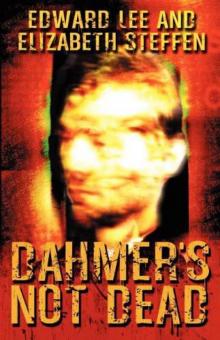 Dahmer's Not Dead
Dahmer's Not Dead Quest for Sex, Truth & Reality
Quest for Sex, Truth & Reality The Innswich Horror
The Innswich Horror Brides Of The Impaler
Brides Of The Impaler Goon
Goon Trolley No. 1852
Trolley No. 1852 Sacrifice
Sacrifice Monster Lake
Monster Lake Succubi
Succubi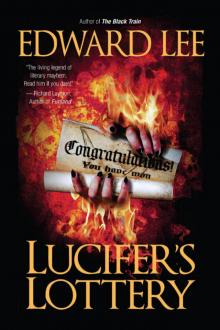 Lucifer's Lottery
Lucifer's Lottery Monstrosity
Monstrosity The House
The House The Dunwich Romance
The Dunwich Romance Operator B
Operator B Bullet Through Your Face (improved format)
Bullet Through Your Face (improved format) Grimoire Diabolique
Grimoire Diabolique Room 415
Room 415 The Messenger (2011 reformat)
The Messenger (2011 reformat) Incubi
Incubi The Black Train
The Black Train House Infernal by Edward Lee
House Infernal by Edward Lee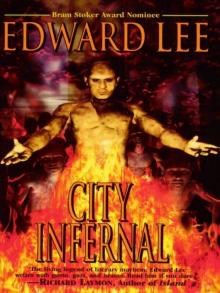 City Infernal
City Infernal Creekers
Creekers The Haunter Of The Threshold
The Haunter Of The Threshold Mangled Meat
Mangled Meat The Doll House
The Doll House Header 2
Header 2 Bullet Through Your Face (reformatted)
Bullet Through Your Face (reformatted) Header 3
Header 3 Infernal Angel
Infernal Angel Pages Torn From a Travel Journal
Pages Torn From a Travel Journal Edward Lee: Selected Stories
Edward Lee: Selected Stories The Bighead
The Bighead The Chosen
The Chosen